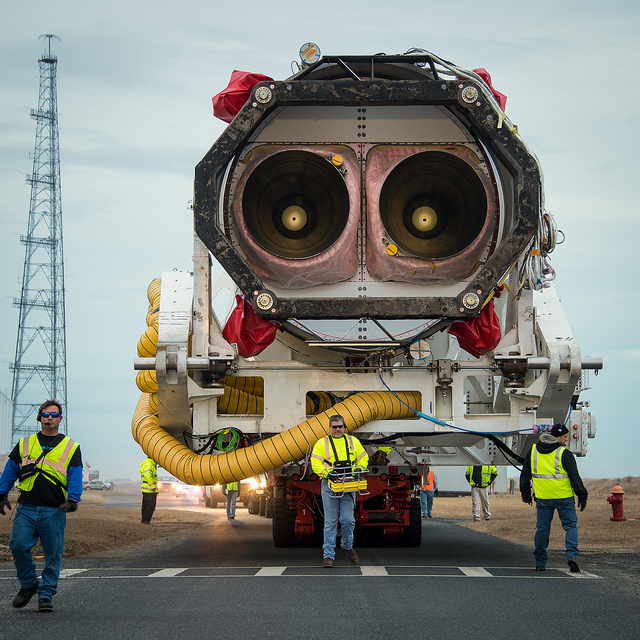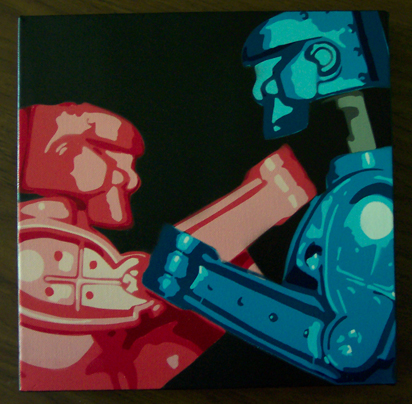Posts Tagged ‘Problem Definition’
If you want to learn, define a learning objective.
 Innovation is all about learning. And if the objective of innovation is learning, why not start with learning objectives?
Innovation is all about learning. And if the objective of innovation is learning, why not start with learning objectives?
Here’s a recipe for learning: define what you want to learn, figure how you want to learn, define what you’ll measure, work the learning plan, define what you learned and repeat.
With innovation, the learning is usually around what customers/users want, what new things (or processes) must be created to satisfy their needs and how to deliver the useful novelty to them. Seems pretty straightforward, until you realize the three elements interact vigorously. Customers’ wants change after you show them the new things you created. The constraints around how you can deliver the useful novelty (new product or service) limit the novelty you can create. And if the customers don’t like the novelty you can create, well, don’t bother delivering it because they won’t buy it.
And that’s why it’s almost impossible to develop a formal innovation process with a firm sequence of operations. Turns out, in reality the actual process looks more like a fur ball than a flow chart. With incomplete knowledge of the customer, you’ve got to define the target customer, knowing full-well you don’t have it right. And at the same time, and, again, with incomplete knowledge, you’ve got to assume you understand their problems and figure out how to solve them. And at the same time, you’ve got to understand the limitations of the commercialization engine and decide which parts can be reused and which parts must be blown up and replaced with something new. All three explore their domains like the proverbial drunken sailor, bumping into lampposts, tripping over curbs and stumbling over each other. And with each iteration, they become less drunk.
If you create an innovation process that defines all the if-then statements, it’s too complicated to be useful. And, because the if-thens are rearward-looking, they don’t apply the current project because every innovation project is different. (If it’s the same as last time, it’s not innovation.) And if you step up the ladder of abstraction and write the process at a high level, the process steps are vague, poorly-defined and less than useful. What’s a drunken sailor to do?
Define the learning objectives, define the learning plan, define what you’ll measure, execute the learning plan, define what you learned and repeat.
When the objective is learning, start with the learning objectives.
Image credit Jean L.
Don’t trust your gut, run the test.
 At first glance, it seems easy to run a good test, but nothing can be further from the truth.
At first glance, it seems easy to run a good test, but nothing can be further from the truth.
The first step is to define the idea/concept you want to validate or invalidate. The best way is to complete one of these two sentences: I want to learn that [type your idea here] is true. Or, I want to learn that [enter your idea here] is false.
Next, ask yourself this question: What information do I need to validate (or invalidate) [type your idea here]? Write down the information you need. In the engineering domain, this is straightforward: I need the temperature of this, the pressure of that, the force generated on part xyz or the time (in seconds) before the system catches fire. But for people-related ideas, things aren’t so straightforward. Some things you may want to know are: how much will you pay for this new thing, how many will you buy, on a scale of 1 to 5 how much do you like it?
Now the tough part – how will you judge pass or fail? What is the maximum acceptable temperature? What is the minimum pressure? What is the maximum force that can be tolerated? How many seconds must the system survive before catching fire? And for people: What is the minimum price that can support a viable business? How many must they buy before the company can prosper? And if they like it at level 3, it’s a go. And here’s the most importance sentence of the entire post:
The decision criteria must be defined BEFORE running the test.
If you wait to define the go/no-go criteria until after you run the test and review the data, you’ll adjust the decision criteria so you make the decision you wanted to make before running the test. If you’re not going to define the decision criteria before running the test, don’t bother running the test and follow your gut. Your decision will be a bad one, but at least you’ll save the time and money associated with the test.
And before running the test, define the test protocol. Think recipe in a cookbook: a pinch of this, a quart of that, mix it together and bake at 350 degrees Fahrenheit for 40 minutes. The best protocols are simple and clear and result in the same sequence of events regardless of who runs the test. And make sure the measurement method is part of the protocol – use this thermocouple, use that pressure gauge, use the script to ask the questions about price and the number they’d buy.
And even with all this rigor, good judgement is still part of the equation. But the judgment is limited to questions like: did we follow the protocol? Did the measurement system function properly? Do the initial assumptions still hold? Did anything change since we defined the learning objective and defined the test protocol?
To create formal learning objectives, to write well-defined test protocols and to formalize the decision criteria before running the test require rigor, discipline, time and money. But, because the cost of making a bad decision is so high, the cost of running good tests is a bargain at twice the price.
Image credit – NASA Goddard Flight Center
How To Reduce Innovation Risk
 The trouble with innovation is it’s risky. Sure, the upside is nice (increased sales), but the downside (it doesn’t work) is distasteful. Everyone is looking for the magic pill to change the risk-reward ratio of innovation, but there is no pill. Though there are some things you can do to tip the scale in your favor.
The trouble with innovation is it’s risky. Sure, the upside is nice (increased sales), but the downside (it doesn’t work) is distasteful. Everyone is looking for the magic pill to change the risk-reward ratio of innovation, but there is no pill. Though there are some things you can do to tip the scale in your favor.
All problems are business problems. Problem solving is the key to innovation, and all problems are business problems. And as companies embrace the triple bottom line philosophy, where they strive to make progress in three areas – environmental, social and financial, there’s a clear framework to define business problems.
Start with a business objective. It’s best to define a business problem in terms of a shortcoming in business results. And the holy grail of business objectives is the growth objective. No one wants to be the obstacle, but, more importantly, everyone is happy to align their career with closing the gap in the growth objective. In that way, if solving a problem is directly linked to achieving the growth objective, it will get solved.
Sell more. The best way to achieve the growth objective is to sell more. Bottom line savings won’t get you there. You need the sizzle of the top line. When solving a problem is linked to selling more, it will get solved.
Customers are the only people that buy things. If you want to sell more, you’ve got to sell it to customers. And customers buy novel usefulness. When solving a problem creates novel usefulness that customers like, the problem will get solved. However, before trying to solve the problem, verify customers will buy what you’re selling.
No-To-Yes. Small increases in efficiency and productivity don’t cause customers to radically change their buying habits. For that your new product or service must do something new. In a No-To-Yes way, the old one couldn’t but the new one can. If solving the problem turns no to yes, it will get solved.
Would they buy it? Before solving, make sure customers will buy the useful novelty. (To know, clearly define the novelty in a hand sketch and ask them what they think.) If they say yes, see the next question.
Would it meet our growth objectives? Before solving, do the math. Does the solution result in incremental sales larger than the growth objective? If yes, see the next question.
Would we commercialize it? Before solving, map out the commercialization work. If there are no resources to commercialize, stop. If the resources to commercialize would be freed up, solve it.
Defining is solving. Up until now, solving has been premature. And it’s still not time. Create a functional model of the existing product or service using blocks (nouns) and arrows (verbs). Then, to create the problem(s), add/modify/delete functions to enable the novel usefulness customers will buy. There will be at least one problem – the system cannot perform the new function. Now it’s time to take a deep dive into the physics and bring the new function to life. There will likely be other problems. Existing functions may be blocked by the changes needed for the new function. Harmful actions may develop or some functions will be satisfied in an insufficient way. The key is to understand the physics in the most complete way. And solve one problem at a time.
Adaptation before creation. Most problems have been solved in another industry. Instead of reinventing the wheel, use TRIZ to find the solutions in other industries and adapt them to your product or service. This is a powerful lever to reduce innovation risk.
There’s nothing worse than solving the wrong problem. And you know it’s the wrong problem if the solution doesn’t: solve a business problem, achieve the growth objective, create more sales, provide No-To-Yes functionality customers will buy, and you won’t allocate the resources to commercialize.
And if the problem successfully runs the gauntlet and is worth solving, spend time to define it rigorously. To understand the bedrock physics, create a functional of the system, add the new functionality and see what breaks. Then use TRIZ to create a generic solution, search for the solution across other industries and adapt it.
The key to innovation is problem solving. But to reduce the risk, before solving, spend time and energy to make sure it’s the right problem to solve.
It’s far faster to solve the right problem slowly than to solve the wrong one quickly.
Image credit – Kate Ter Haar
See differently to solve differently.
 There are many definitions for creativity and innovation, but none add meaningfully to how the work is done. Though it’s clear why the work is important – creativity and innovation underpin corporate prosperity and longevity – it’s especially helpful to know how to do it.
There are many definitions for creativity and innovation, but none add meaningfully to how the work is done. Though it’s clear why the work is important – creativity and innovation underpin corporate prosperity and longevity – it’s especially helpful to know how to do it.
At the most basic level, creativity and innovation are about problem solving. But it’s a special flavor of problem solving. Creativity and innovation are about problems solving new problems in new ways. The glamorous part is ‘solving in new ways’ and the important part is solving new problems.
With continuous improvement the same problems are solved over and over. Change this to eliminate waste, tweak that to reduce variation, adjust the same old thing to make it work a little better. Sure, the problems change a bit, but they’re close cousins to the problems to the same old problems from last decade. With discontinuous improvement (which requires high levels of creativity and innovation) new problems are solved. But how to tell if the problem is new?
Solving new problems starts with seeing problems differently.
Systems are large and complicated, and problems know how to hide in the nooks and crannies. In a Where’s Waldo way, the nugget of the problem buries itself in complication and misuses all the moving parts as distraction. Problems use complication as a cloaking mechanism so they are not seen as problems, but as symptoms.
Telescope to microscope. To see problems differently, zoom in. Create a hand sketch of the problem at the microscopic level. Start at the system level if you want, but zoom in until all you see is the problem. Three rules: 1. Zoom in until there are only two elements on the page. 2. The two elements must touch. 3. The problem must reside between the two elements.
Noun-verb-noun. Think hammer hits nail and hammer hits thumb. Hitting the nail is the reason people buy hammers and hitting the thumb is the problem.
A problem between two things. The hand sketch of the problem would show the face of the hammer head in contact with the surface of the thumb, and that’s all. The problem is at the interface between the face of the hammer head and the surface of the thumb. It’s now clear where the problem must be solved. Not where the hand holds the shaft of the hammer, not at the claw, but where the face of the hammer smashes the thumb.
Before-during-after. The problem can be solved before the hammer smashes the thumb, while the hammer smashes the thumb, or after the thumb is smashed. Which is the best way to solve it? It depends, that’s why it must be solved at the three times.
Advil and ice. Solving the problem after the fact is like repair or cleanup. The thumb has been smashed and repercussions are handled in the most expedient way.
Put something between. Solving the problem while it happens requires a blocking or protecting action. The hammer still hits the thumb, but the protective element takes the beating so the thumb doesn’t.
Hand in pocket. Solving the problem before it happens requires separation in time and space. Before the hammer can smash the thumb it is moved to a safe place – far away from where the hammer hits the nail.
Nail gun. If there’s no way for the thumb to get near the hammer mechanism, there is no problem.
Cordless drill. If there are no nails, there are no hammers and no problem.
Concrete walls. If there’s no need for wood, there’s no need for nails or a hammer. No hammer, no nails, no problem.
Discerning between symptoms and problems can help solve new problems. Seeing problems at the micro level can result in new solutions. Looking closely at problems to separate them time and space can help see problems differently.
Eliminating the tool responsible for the problem can get rid of the problem of a smashed thumb, but it creates another – how to provide the useful action of the driven nail. But if you’ve been trying to protect thumbs for the last decade, you now have a chance to design a new way to fasten one piece of wood to another, create new walls that don’t use wood, or design structures that self-assemble.
Image credit – Rodger Evans
Innovation and the Mythical Idealized Future State
 When it’s time to innovate, the first task is usually to define the Idealized Future State (IFS). The IFS is a word picture that captures what it looks like when the innovation work has succeeded beyond our wildest dreams. The IFS, so it goes, is directional so we can march toward the right mountain and inspirational so we can sustain our pace over the roughest territory.
When it’s time to innovate, the first task is usually to define the Idealized Future State (IFS). The IFS is a word picture that captures what it looks like when the innovation work has succeeded beyond our wildest dreams. The IFS, so it goes, is directional so we can march toward the right mountain and inspirational so we can sustain our pace over the roughest territory.
For the IFS to be directional, it must be aimed at something – a destination. But there’s a problem. In a sea of uncertainty, where the work has never been done before and where there are no existing products, services or customers, there are an infinite number of IFRs/destinations to guide our innovation work. Open question – When the territory is unknown, how do we choose the right IFS?
For the IFS to be inspirational, it must create yearning for something better (the destination). And for the yearning to be real, we must believe the destination is right for us. Open question – How can we yearn for an IFS when we really can’t know it’s the right destination?
Maps aren’t the territory, but they are a collection of all possible destinations within the design space of the map. If you have the right map, it contains your destination. And for a long time now, the old paper maps have helped people find their destinations. But on their own maps don’t tell us the direction to drive. If you have a map of the US and you want to drive to Kansas, in which direction do you drive? It depends. If in California, drive east; if in Mississippi, drive north; if in New Hampshire, drive west; and in Minnesota, drive south. If Kansas is your idealized future state, the map alone won’t get your there. The direction you drive depends on your location.
GPS has been a nice addition to maps. Enter the destination on the map, ask the satellites to position us globally and it’s clear which way to drive. (I drive west to reach Kansas.) But the magic of GPS isn’t in the electronic map, GPS is magic because it solves the location problem.
Before defining the idealized future state, define your location. It grounds the innovation work in the reality of what is, and people can rally around what is. And before setting the innovation direction with the IFS, define the next problems to solve and walk in their direction.
Image credit – Adrian Brady
Full Circle Innovation
 It’s not enough to sell things to customers, because selling things is transactional and, over time, transactional selling deteriorates into selling on price. And selling on price is a race to the bottom.
It’s not enough to sell things to customers, because selling things is transactional and, over time, transactional selling deteriorates into selling on price. And selling on price is a race to the bottom.
Sales must move from transactional to relational, where people in the sales organization become trusted advisers and then something altogether deeper. At this deeper level of development, the sales people know the business as well as the customer, know where the customer wants to go and provide unique perspective and thoughtful insight. That’s quite a thing for sales, but it’s not enough. Sales must become the conduit that brings the entire company closer to the customer and their their work.
When the customer is trying to figure out what’s next, sales brings in a team of marketing, R&D and manufacturing to triangulate on the future. The objective is to develop deep understanding of the customer’s world. The understanding must go deeper than the what’s. The learning must scrape bottom and get right down to the bedrock why’s.
To get to bedrock, marketing leads learning sessions with the customer. And it all starts by understanding the work. What does the customer do? Why is it done that way? What are the most important processes? How did they evolve? Why do they flow the way they do? These aren’t high-level questions, they are low-level, specific questions, done in front of the actual work.
The mantra – Go to the work.
When the learning sessions are done well, marketing includes experts in manufacturing and R&D. Manufacturing brings their expertise in understanding process and R&D brings their expertise in products and technologies. And to understand the work the deepest way, the tool of choice is the Value Stream Map (VSM).
Cross-organization teams are formed (customer, sales, marketing, manufacturing, and R&D) and are sent out to create Value Steam Maps of the most important processes. (Each team is supported by a VSM expert.) Once the maps are made, all the teams come back together to review the them and identify the fundamental constraints and how to overcome them. The solutions are not limited to new product offerings, rather the solutions could be training, process changes, policy changes, organizational changes or business model changes.
Not all the problems are solved in the moment. After the low hanging fruit is picked, the real work begins. After returning home, marketing and R&D work together to formulate emergent needs and create new ways to meet them. The tool of choice is the IBE (Innovation Burst Event).
To prepare for the IBE, marketing and R&D formalize emergent needs and create Design Challenges to focus the IBE teams. Solving the Design Challenges breaks the conflicts creates novel solutions that meet the unmet needs. In this way, the IBE is a pull process – customer needs create the pull for a solution.
The IBE is a one or two-day event where teams solve the Design Challenges by building conceptual prototypes (thinking prototypes). Then, they vote on the most interesting concepts and create a build plan (who, what, when). The objective of the build plan is to create a Diabolically Simple Prototype (DSP), a functional prototype that demonstrates the new functionality. What makes it diabolical is quick build time. At the end of the IBE is a report out of the build plan to the leader who can allocate the resources to execute it.
In a closed-loop way, once the DSP is built, sales arranges another visit to the customer to demonstrate the new solution. And because the prototype designed to fulfill the validated customer need, by definition, the prototype will be valuable to the customer.
This full circle process has several novel elements, but the magic is in the framework that brings everyone together. With the process, two companies can work together effectively to achieve shared business objectives. And, because the process brings together multiple functions and their unique perspectives, the solutions are well-thought-out and grounded in the diversity of the collective.
Image credit – Gerry Machen
Diabolically Simple Prototypes
 Ideas are all talk and no action. Ideas are untested concepts that have yet to rise to the level of practicality. You can’t sell an idea and you can’t barter with them. Ideas aren’t worth much.
Ideas are all talk and no action. Ideas are untested concepts that have yet to rise to the level of practicality. You can’t sell an idea and you can’t barter with them. Ideas aren’t worth much.
A prototype is a physical manifestation of an idea. Where ideas are ethereal, prototypes are practical. Where ideas are fuzzy and subject to interpretation, prototypes are a sledge hammer right between the eyes. There is no arguing with a prototype. It does what it does and that’s the end of that. You don’t have to like what a prototype stands for, but you can’t dismiss it. Where ideas aren’t worth a damn, prototypes are wholly worth every ounce of effort to create them.
If Camp A says it will work and Camp B says it won’t, a prototype will settle the disagreement pretty quickly. It will work or it won’t. And if it works, the idea behind it is valid. And if it doesn’t, the idea may be valid, but a workable solution is yet-to-be discovered. Either way, a prototype brings clarity.
Prototypes are not elegant. Prototypes are ugly. The best ones do one thing – demonstrate the novel idea that underpins them. The good ones are simple, and the best ones are diabolically simple. It is difficult to make diabolically simple prototypes (DSPs), but it’s a skill that can be learned. And it’s worth learning because DSPs come to life in record time. The approach with DSPs is to take the time up front to distill the concept down to its essence and then its all-hands-on-deck until it’s up and running in the lab.
But the real power of the DSP is that it drives rapid learning. When a new idea comes, it’s only a partially formed. The process of trying to make a DSP demands the holes are filled and blurry parts are brought into focus. The DSP process demands a half-baked idea matures into fully-baked physical embodiment. And it’s full-body learning. Your hands learn, your eyes learn and your torso learns.
If you find yourself in a disagreement of ideas, stop talking and start making a prototype. If the DSP works, the disagreement is over.
Diabolically simple prototypes end arguments. But, more importantly, they radically increase the pace of learning.
Image credit – snippets101
With innovation, it depends.
 By definition, when the work is new there is uncertainty. And uncertainty can be stressful. But, instead of getting yourself all bound up, accept it. More than that, relish in it. Wear it as a badge of honor. Not everyone gets the chance to work on something new – only the best do. And, because you’ve been asked to do work with a strong tenor of uncertainty, someone thinks you’re the best.
By definition, when the work is new there is uncertainty. And uncertainty can be stressful. But, instead of getting yourself all bound up, accept it. More than that, relish in it. Wear it as a badge of honor. Not everyone gets the chance to work on something new – only the best do. And, because you’ve been asked to do work with a strong tenor of uncertainty, someone thinks you’re the best.
But uncertainty is an unknown quantity, and our systems have been designed to reject it, not swim in it. When companies want to get serious they drive toward a culture of accountability and the new work gets the back seat. Accountability is mis-mapped to predictability, successful results and on time delivery. Accountability, as we’ve mapped it, is the mortal enemy of new work. When you’re working on a project with a strong element of uncertainty, the only certainty is the task you have in front of you. There’s no certainty on how the task will turn out, rather, there’s only the simple certainty of the task.
With work with low uncertainty there are three year plans, launch timelines and predictable sales figures. Task one is well-defined and there’s a linear flow of standard work right behind it – task two through twenty-two are dialed in. But when working with uncertainty, the task at hand is all there is. You don’t know the next task. When someone asks what’s next the only thing you can say is “it depends.” And that’s difficult in a culture of traditional accountability.
An “it depends” Gannt chart is an oxymoron, but with uncertainty step two is defined by step one. If A, then B. But if the wheels fall off, I’m not sure what we’ll do next. The only thing worse than an “it depends” Gantt chart is an “I’m not sure” Gannt chart. But with uncertainty, you can be sure you won’t be sure. With uncertainty, traditional project planning goes out the window, and “it depends” project planning is the only way.
With uncertainty, traditional project planning is replaced by a clear distillation of the problem that must be solved. Instead of a set of well-defined tasks, ask for a block diagram that defines the problem that must be solved. And when there’s clarity and agreement on the problem that must be solved, the supporting tasks can be well-defined. Step one – make a prototype like this and test it like that. Step two – it depends on how step one turns out. If it goes like this then we’ll do that. If it does that, we’ll do the other. And if it does neither, we’re not sure what we’ll do. You don’t have to like it, but that’s the way it is.
With uncertainty, the project plan isn’t the most important thing. What’s most important is relentless effort to define the system as it is. Here’s what the system is doing, here’s how we’d like it to behave and, based on our mechanism-based theory, here’s the prototype we’re going to build and here’s how we’re going to test it. What are we going to do next? It depends.
What’s next? It depends. What resources do you need? It depends. When will you be done? It depends.
Innovation is, by definition, work that is new. And, innovation, by definition, is uncertain. And that’s why with innovation, it depends. And that’s why innovation is difficult.
And that’s why you’ve got to choose wisely when you choose the people that do your innovation work.
Image credit – Sara Biljana Gaon (off)
The Causes and Conditions for Innovation
 Everyone wants to do more innovation. But how? To figure out what’s going on with their innovation programs, companies spend a lot of time to put projects into buckets but this generates nothing but arguments about whether projects are disruptive, radical innovation, discontinuous, or not. Such a waste of energy and such a source of conflict. Truth is, labels don’t matter. The only thing that matters is if the projects, as a collection, meet corporate growth objectives. Sure, there should be a short-medium-long look at the projects, but, for the three time horizons the question is the same – Do the projects meet the company’s growth objectives?
Everyone wants to do more innovation. But how? To figure out what’s going on with their innovation programs, companies spend a lot of time to put projects into buckets but this generates nothing but arguments about whether projects are disruptive, radical innovation, discontinuous, or not. Such a waste of energy and such a source of conflict. Truth is, labels don’t matter. The only thing that matters is if the projects, as a collection, meet corporate growth objectives. Sure, there should be a short-medium-long look at the projects, but, for the three time horizons the question is the same – Do the projects meet the company’s growth objectives?
To create the causes and conditions for innovation, start with a clear growth objective by geography. Innovation must be measured in dollars.
Good judgement is required to decide if a project is worthy of resources. The incremental sales estimates are easy to put together. The difficult parts are deciding if there’s enough sizzle to cause customers to buy and deciding if the company has the chops to do the work. The difficulty isn’t with the caliber of judgement, rather it’s insufficient information provided to the people that must use their good judgement. In shorth, there is poor clarity on what the projects are about. Any description of the projects blurry and done at a level of abstraction that’s too high. Good judgement can’t be used when the picture is snowy, nor can it be effective with a flyby made in the stratosphere.
To create the causes and conditions for innovation, demand clarity and bedrock-level understanding.
To guarantee clarity and depth, use the framework of novel, useful, successful. Give the teams a tight requirement for clarity and depth and demand they meet it. For each project, ask – What is the novelty? How is it useful? When the project is completed, how will everyone be successful?
A project must deliver novelty and the project leader must be able to define it on one page. The best way to do this is to create physical (functional) model of the state-of-the-art system and modify it with the newness created by the project (novelty called out in red). This model comes in the form of boxes that describe the system elements (simple nouns) and arrows that define the actions (simple verbs). Think hammer (box – simple noun) hits (arrow -simple verb) nail (box – simple noun) as the state-of-the-art system and the novelty in red – a thumb protector (box) that blocks (arrow) hammer (box). The project delivers a novel thumb protector that prevents a smashed thumb. The novelty delivered by the project is clear, but does it pass the usefulness test?
To create the causes and conditions for innovation, demand a one-page functional model that defines and distills down to bedrock level the novelty created by the project. And to help the project teams do it, hire a good teach teacher and give them the tools, time and training.
The novelty delivered by a project must be useful and the project leader must clearly define the usefulness on one page. The best way to do this is with a one page hand sketch showing the customer actively using the novelty. In a jobs-to-be-done way, the sketch must define where, when and how the customer will realize the usefulness. And to force distillation blinding, demand they use a fat, felt tip marker. With this clarity, leaders with good judgement can use their judgement effectively. Good questions flow freely. Does every user of a hammer need this? Can a left-handed customer use the thumb guard? How does it stay on? Doesn’t it get in the way? Where do they put it when they’re done? Do they wear it all the time? With this clarity, the questions are so good there is no escape. If there are holes they will be uncovered.
To create the causes and conditions for innovation, demand a one-page hand sketch of the customer demonstrating the useful novelty.
To be successful, the useful novelty must be sufficiently meaningful that customers pay money for it. The standard revenue projections are presented, but, because there is deep clarity on the novelty and usefulness, there is enough context for good judgement to be effective. What fraction of hammer users hit their thumbs? How often? Don’t they smash their fingers too? Why no finger protection? Because of the clarity, there is no escape.
To create the causes and conditions, use the deep clarity to push hard on buying decisions and revenue projections.
The novel, useful, successful framework is a straightforward way to decide if the project portfolio will meet growth objectives. It demands a clear understanding of the newness created by the project but, in return, provides context needed to use good judgement. In that way, because projects cannot start without passing the usefulness and successfulness tests, resources are not allocated to unworthy projects.
But while clarity and this level of depth is a good start, it’s not enough. It’s time for a deeper dive. The project must distill the novelty into a conflict diagram, another one-pager like the others, but deeper. Like problem definition on steroids, a conflict must be defined in space – between two things (thumb and face of hammer head) – and time (just as the hammer hits thumb). With that, leaders can ask before-during-after questions. Why not break the conflict before it happens by making a holding mechanism that keeps the thumb out of the strike zone? Are you sure you want to solve it during the conflict time (when the hammer hits thumb)? Why not solve it after the fact by selling ice packs for their swollen thumbs?
But, more on the conflict domain at another time.
For now, use novel, useful, successful to stop bad projects and start good ones.
Image credit – Natashi Jay
Make it work.
 If you think something can’t be done, it won’t get done. And if you think it may be possible, or is possible, it may get done. Those are the rules.
If you think something can’t be done, it won’t get done. And if you think it may be possible, or is possible, it may get done. Those are the rules.
If an expert says it will work, it will work. If they say it won’t work, it might. Experts can tell you will work, but can’t tell you what won’t.
If your boss tells you it won’t work, it might. Give it a try. It will be fun if it works.
If you can’t make it work, make it worse and then do the opposite.
If you can’t explain the problem to your young kids, you don’t understand the situation and you won’t make it work.
If something didn’t work ten years ago, it may work now. Technology is better and we’re smarter. More likely it would have worked ten years ago if they ran more than one crude experiment before they gave up.
If you can’t draw a one page sketch of the problem, it may never work.
If you can’t make it work, put it down for three days. Your brain may make it work while you’re sleeping.
If you don’t know the problem, you can’t make it work. Be sure you’re trying to solve the right problem.
If your boss tells you it will work, it might. If they tell you how to make it work, let them do it.
If none of your attempts have been fruitful and you’re out of tricks, purposely make one performance attribute worse to free up design space. That may work.
If you don’t know when the problem occurs, you don’t know much. Your solutions won’t work.
If you tried everything and nothing worked, ask someone for help whose specialty in an unrelated area. They may have made it work in a different domain.
If you think everyone in the group understands the problem the same way, they don’t. There’s no way they’ll agree on the best way to make it work. Don’t wait for consensus.
If you don’t try, that’s the only way to guarantee it won’t work.
Image credit – Simon Greig
Moving Away from Best Practices
 If the work is new, there is no best practice.
If the work is new, there is no best practice.
When you read the best books you’ll understand what worked in situations that are different than yours. When you read the case studies you’ll understand how one company succeeded in a way that won’t work in yours. The best practices in the literature worked in a different situation, in a different time and a under different cultural framework. They won’t work best for you.
Just because a practice worked last time doesn’t mean it’s a best practice this time. More strongly, just because it worked last time doesn’t mean it was best last time. There may have been a better way.
When a problem has high urgency it should be solved in a fast way, but if urgency is low, the problem should be solved in an efficient way. Which way is best? If the consequences of getting it wrong are severe, analyses and parallel solutions are skillful, but if it’s not terribly important to get it right, a lower cost way is better. But is either the best way?
The best practices found in books are usually described a high level of abstraction using action words, block diagrams and arrows. And when described at such a high level, they’re not actionable. You may know all the major steps, but you won’t know how each step should be done. And if the detail is provided, the context of your situation is different and the prescriptive steps don’t apply.
Instead of best practices, think effective practices. Effective because the people doing the work can do it effectively. Effective because it fits with the capability and capacity of the people doing the work. Effective because it meshes with existing processes and projects. Effective because it fits with your budget, timeline and risk profile. Effective because it fits with your company values.
Because all our systems are people systems, there are no best practices.
 Mike Shipulski
Mike Shipulski